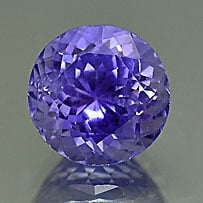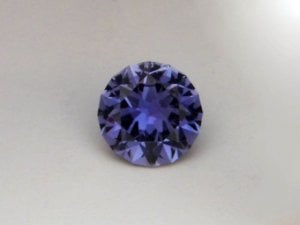I spent a few months looking at custom sapphire engagement rings with my fiancee. Our target price was $3000 - for right around there we were quoted a custom 18K yellow gold setting with a 2 carat heat-treated cushion sapphire - the ring having a micro-channel setting with tiny sapphires (rather than the usual diamonds) inlaid. The sapphire was darker than the average sapphire we looked at but went perfectly with the setting. It was (in my mind, since I don't know that much and there are no gradings) very deep in color and at least moderately brilliant/sparkling, and had no inclusions that I could see with a loupe. I got a similar quote from another jeweler (and one for a non-heat-treated sapphire ring for $6800 - which I ignored).
Unfortunately, it looks like I'm unexpectedly going to have to bear all of the costs of the (large) wedding, and that requires me to radically rethink my budget. Now I'd be comfortable spending $1500 but hardly more. And I don't want to drag this out - I want to get a ring soon, as this is a bit of a disappointment to her.
My questions:
- Based on my description, how expensive did $3000 sound for the heat-treated sapphire on an 18K gold ring? Is it worth trying to negotiate to approach my new target price of $1500? What sort of negotiation leeway could I expect? Is there any area (stone, setting) in which I am likely overpaying?
- I would be willing to look at a smaller stone... 1.5 carat sapphires look good. Are there other modifications you would suggest to get the price into this range? Do I need to stop looking at custom rings?
thanks for your help.
Unfortunately, it looks like I'm unexpectedly going to have to bear all of the costs of the (large) wedding, and that requires me to radically rethink my budget. Now I'd be comfortable spending $1500 but hardly more. And I don't want to drag this out - I want to get a ring soon, as this is a bit of a disappointment to her.
My questions:
- Based on my description, how expensive did $3000 sound for the heat-treated sapphire on an 18K gold ring? Is it worth trying to negotiate to approach my new target price of $1500? What sort of negotiation leeway could I expect? Is there any area (stone, setting) in which I am likely overpaying?
- I would be willing to look at a smaller stone... 1.5 carat sapphires look good. Are there other modifications you would suggest to get the price into this range? Do I need to stop looking at custom rings?
thanks for your help.





300x240.png)